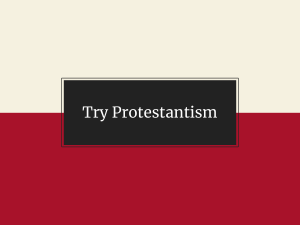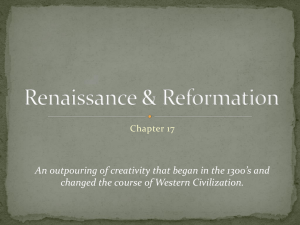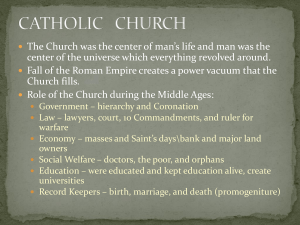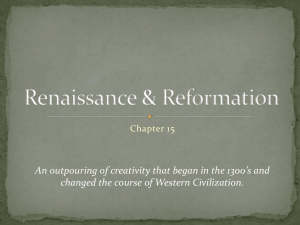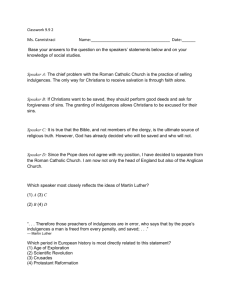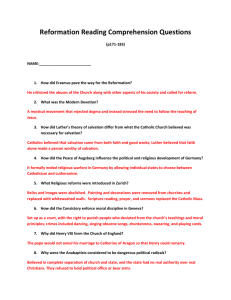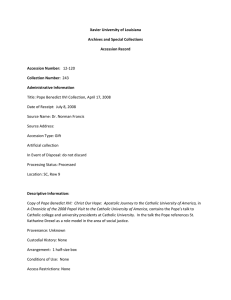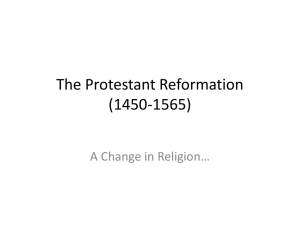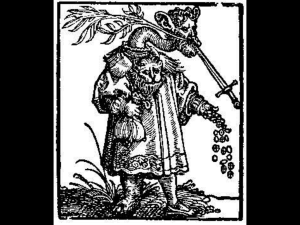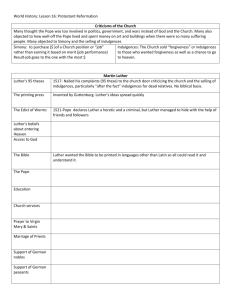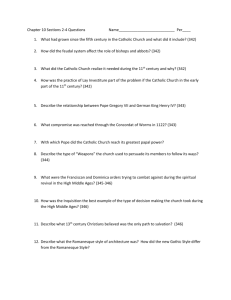How did the Renaissance movement affect people’s Focus on individual\humanists
advertisement
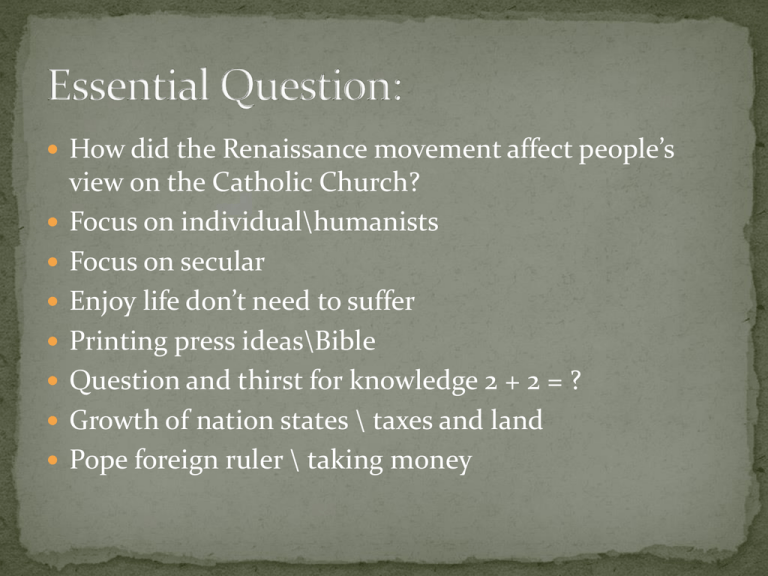
How did the Renaissance movement affect people’s view on the Catholic Church? Focus on individual\humanists Focus on secular Enjoy life don’t need to suffer Printing press ideas\Bible Question and thirst for knowledge 2 + 2 = ? Growth of nation states \ taxes and land Pope foreign ruler \ taking money Reformation: religious revolution in western Europe Income = salvation Popes are warriors & politicians Vices took precedence over morality John Wycliffe and Jan Hus ask for reform but met with resistance 1st Break – Germany Core of HRE – 300 independent states Vatican sent Johann Tetzel to raise $$ Indulgences: pardons for punishment from sin Originally a reward German states: no restriction to sale of indulgences Monk – search for salvation good deeds and church ceremonies not needed God’s forgiveness not the church’s Bible the only authority not Church and priests Everyone equal don’t need priests to interpret 95 Theses – 1517 Public challenge of indulgences 1521 Pope Leo X declares Luther a heretic Excommunicated Charles V (HREmp) – Imperial Diet Diet of Worms: Luther an outlaw Banned printing and sale of works Frederick the Wise (Elector of Saxony) Hides Luther Translates Bible to German Peasants revolt against Catholic Church Spread quickly – German princes est Lutheran states Charles V: 1546 sent armies against Protestant princes Peace of Augsberg 1555: German rulers could establish any religion for their state Subjects didn’t like it they could move French?? Sects: new religious groups – no organized churches No authority, discipline, membership or rules Gathering of like minded individuals w/preacher Anglican Church – England Henry VIII England leaves church b/c Henry wants a divorce Leave wife (Catherine of Aragon) for lady in waiting (Anne Boleyn) Act of Supremacy new church of England – king as the head Married 6 times – 1 son Edward VI Creates religious turmoil\unrest King Edward was 9 and regents were Protestant Bloody Mary returns church to Catholicism and persecutes Protestants Queen Elizabeth returns the church back to Anglican John Calvin – Switzerland 1536 – The Institutes of the Christian Religion Humans are sinful by nature Faith in the Bible Predestination – God already decided who will be saved “The elect” – community followed highest moral standards Geneva – theocracy: gov’t ruled by religious w/god’s authority model for others Outlaw on Vices Huguenot: French nobility that converted to Calvinism 1/3 became Calvinists Civil War – Huguenots vs. Catholics 1562 1598 Henry IV – Edicts of Nantes Freedom of worship / political rights Puritanism – form of Calvinism John Knox Scottish preacher Presbyters Presbyterians Mary Queen of Scotland Catholic Counter (Catholic) Reformation Attempt to return the church to emphasizing spirituality Clarify church doctrine Campaign to stop Protestantism Pope Paul III 1534-1549 Inquisition – question “heretics” Keep Catholics in the church Pope Paul IV Index of Forbidden Books Books that were harmful to faith and morals 1545 Church Leaders meet in Trent Met during 3 periods from 1545 – 1563 End abuses of indulgences Discipline within the clergy Emphasized the need for ceremonies People must depend on priests b/c God grants forgiveness through the church Salvation comes from ceremonies & faith Every person has free will Society of Jesus (Jesuits) Ignatius de Loyola – founder 1534 1540 Pope Paul III recognizes Jesuits as an official order Followers Vows: chastity, poverty & obedience to the pope Most effective in spreading Catholicism Stressed education Combined humanist values w/Catholic doctrine 1530’s – mid 1600’s Religious wars in France, Germany, Netherlands & Switzerland Interest in Education Jesuits worked to strengthen faith in school Protestants believed people found the Christian faith by studying the bible Reading and literacy become important Gov’tal Power Increases Gov’ts, like England, took responsibility for church leadership Papal powers decreased
